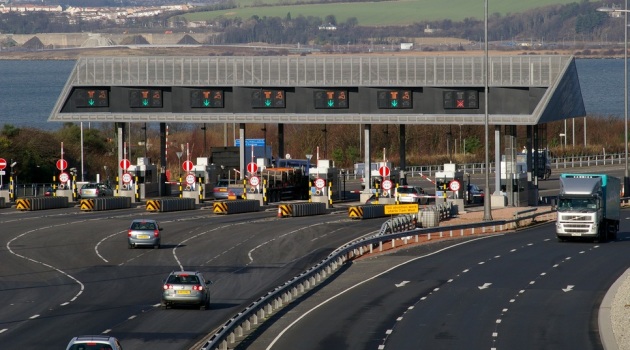No, this post is not about that kind of fantasy.
Instead, we’re dealing strictly with public policy and specifically addressing whether the libertarian agenda is unrealistic.
This is because when I talk to people about libertarianism, they often will say something mildly supportive such as: “I like the idea of getting government out of my wallet and out of my bedroom.”
But then the other shoe drops and they say something skeptical such as: “But you folks are too idealistic in thinking the private sector can do everything.”
If you ask them to elaborate why libertarian ideas are fantasies, you’ll usually hear comments such as:
“Libertarians are crazy to think that we can replace Social Security with personal retirement accounts.” Apparently they’re unaware that dozens of nations including Australia and Chile have very successful private systems.
“Libertarians are silly to think that money could be handled by the private sector.” Apparently they’re unaware that paper money was a creation of the private marketplace and that competitive currencies worked very well in many nations until they were banned by governments.
“Libertarians are naive to think the mail could be delivered in the absence of a government monopoly.” Apparently they’re unaware that many nations such as the United Kingdom and Germany have shifted to competitive private mail delivery.
“Libertarians are foolish to think that the private sector could build and maintain roads.” Apparently they’re unaware of what I’m going to write about today.
It turns out that the private sector can build roads. And a great example happened earlier this year on the other side of the Atlantic Ocean. Here are some passages from a story out of the United Kingdom.
A grandfather sick of roadworks near his home defied his council and built his own toll road allowing people to circumvent the disrupted section. Opened on Friday, it’s the first private toll road built since cars became a familiar sight on British roads 100 years ago. …Mike Watts, 62, hired a crew of workmen and ploughed £150,000 of his own cash into building a 365m long bypass road in a field next to the closed A431. He reckons it will cost another £150,000 in upkeep costs and to pay for two 24 hour a day toll booth operators. …Father of four Mike asked his friend John Dinham if he would mind renting him the field until Christmas and hired three workmen to help build the road in just 10 days. He worked with the Highways Agency, has public liability insurance… But a spokesman for the council said it was not happy about the bold build.
Wow, talk about the private sector coming to the rescue. Two things jump out from that story. First, it took only 10 days and £150,000 to build the road. If the government did it, it would take 20 times as long and cost 30 times as much.
The other noteworthy part of the story is that the local government isn’t happy. Well, of course not. Mr. Watts showed them up.
Some of you may be thinking this is a once-in-a-lifetime story and that we shouldn’t draw any lessons.
But that’s why an article by Nick Zaiac in London’s City A.M. is a must read. He cites the new toll road, but puts it in historical context.
Adams’ work falls into a long tradition of private provision of public services in order to serve some private goal. …Actions like these are not without precedent. In the American island state of Hawaii, residents and business owners gathered together in 2009 to fix a road through a state park that was vital to the area. They completed it entirely for free, with locals donating machinery, materials, and labor. In fact, the project was completed in a shockingly brief eight days. …Private roads have a long and storied history in both Britain and the US. Between 1800 and 1830, private turnpikes made up an astounding 27 per cent of all business incorporations in the US. Britain, between 1750 and 1772, had previously experienced a period of “turnpike mania”, as noted by economic historians Daniel Klein and John Majewski. Put simply, private infrastructure is by no means a new thing. It is simply the slow return to the way many roads were originally built.
Nick then explains that the private sector is making a comeback, and not just for little projects in the United Kingdom and Hawaii.
Australia stands out as one of the leaders. There are currently eight P3 projects on the market, with others in the pipeline, ranging from new rail lines and roads to hospitals. Each of these projects brings private financing into traditionally public projects, with benefits to companies, taxpayers, and, local citizens. Even better, as David Haarmeyer notes in Regulation, infrastructure projects such as those funded public private partnerships serve as good, long-term investments for investors seeking safe returns. …The traditional role of the government as infrastructure monopolist is slowly falling apart. Whether from grassroots efforts or large, complicated P3 projects such as the M6 Toll, the market is proving that it can provide infrastructure that people need, in one way or another.
John Stossel also has written on the topic and discussed modern-day examples of private sector involvement in the United States.
Heck, there are even private lanes on the Virginia side of the “beltway” that circles Washington!
So the moral of the story is that the private sector can do a lot more than people think.
In other words, libertarians may fantasize when they think of very small government. But the fantasy is not because libertarian policy is impractical. The fantasy is thinking (and hoping…and praying…and wishing) that politicians will actually do the right thing.
P.S. You want to know the best part of private roads? If they’re truly private, that means local governments wouldn’t be able to use red-light cameras andticket traps as scams to generate revenue!


